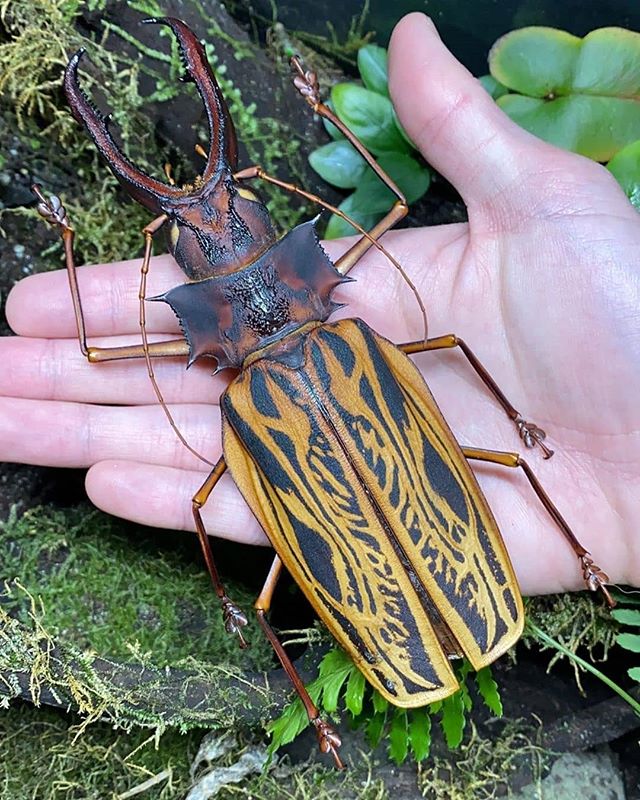The Longhorn Beetle, also known as the Cerambycidae, is a fascinating insect with over 25,000 known species worldwide. These beetles are named after their long antennae, which can be longer than their body length in some species.

One of the most impressive adaptations of the Longhorn Beetle is its ability to chew through and digest wood. Most Longhorn Beetles are considered pests, as they can cause significant damage to trees and timber structures. However, some species play a crucial role in forest ecosystems by breaking down dead or dying trees, allowing new growth to take root.
The Longhorn Beetle also has a unique defence mechanism. Some species produce chemicals that are toxic to predators, while others mimic the appearance of wasps or other insects to deter predators from attacking.
One of the most interesting Longhorn Beetle species is the Titanus giganteus, also known as the Giant Longhorn Beetle. This species is the largest known beetle in the world, with some individuals growing up to 17 centimetres in length.
Despite their impressive adaptations, many species of Longhorn Beetle are facing threats from habitat loss and climate change. It is crucial to protect these fascinating insects and the ecosystems they inhabit.
In recent years, scientists have also been studying the Longhorn Beetle’s ability to digest wood, hoping to unlock new ways to break down cellulose and other plant materials for use in biofuels and other industrial applications.

In conclusion, the Longhorn Beetle is a fascinating insect with impressive adaptations that allow it to thrive in diverse environments. While some species are considered pests, others play a crucial role in forest ecosystems. As we continue to learn more about these incredible insects, we may be able to unlock new ways to harness their unique abilities for the benefit of society and the environment.









